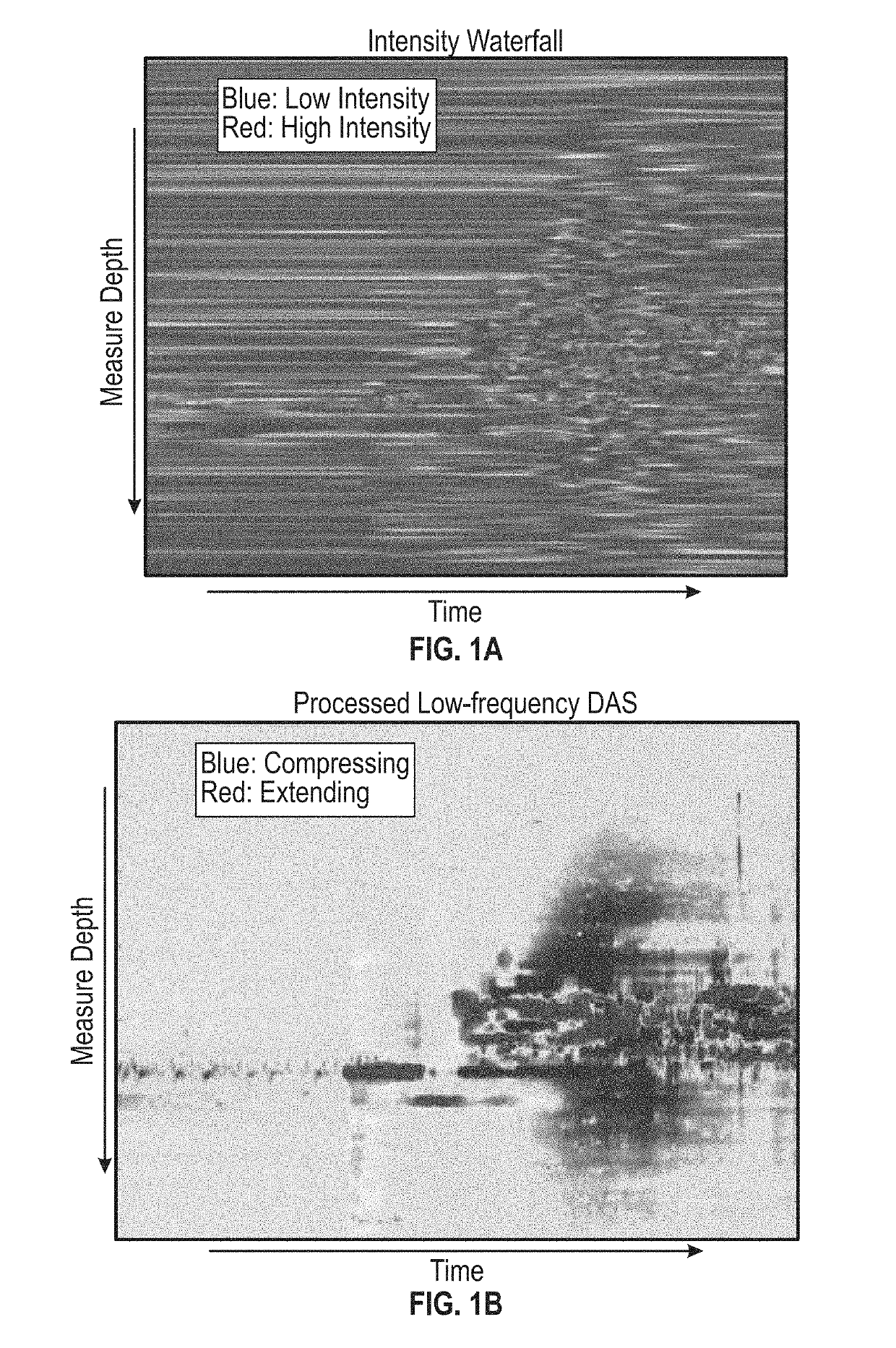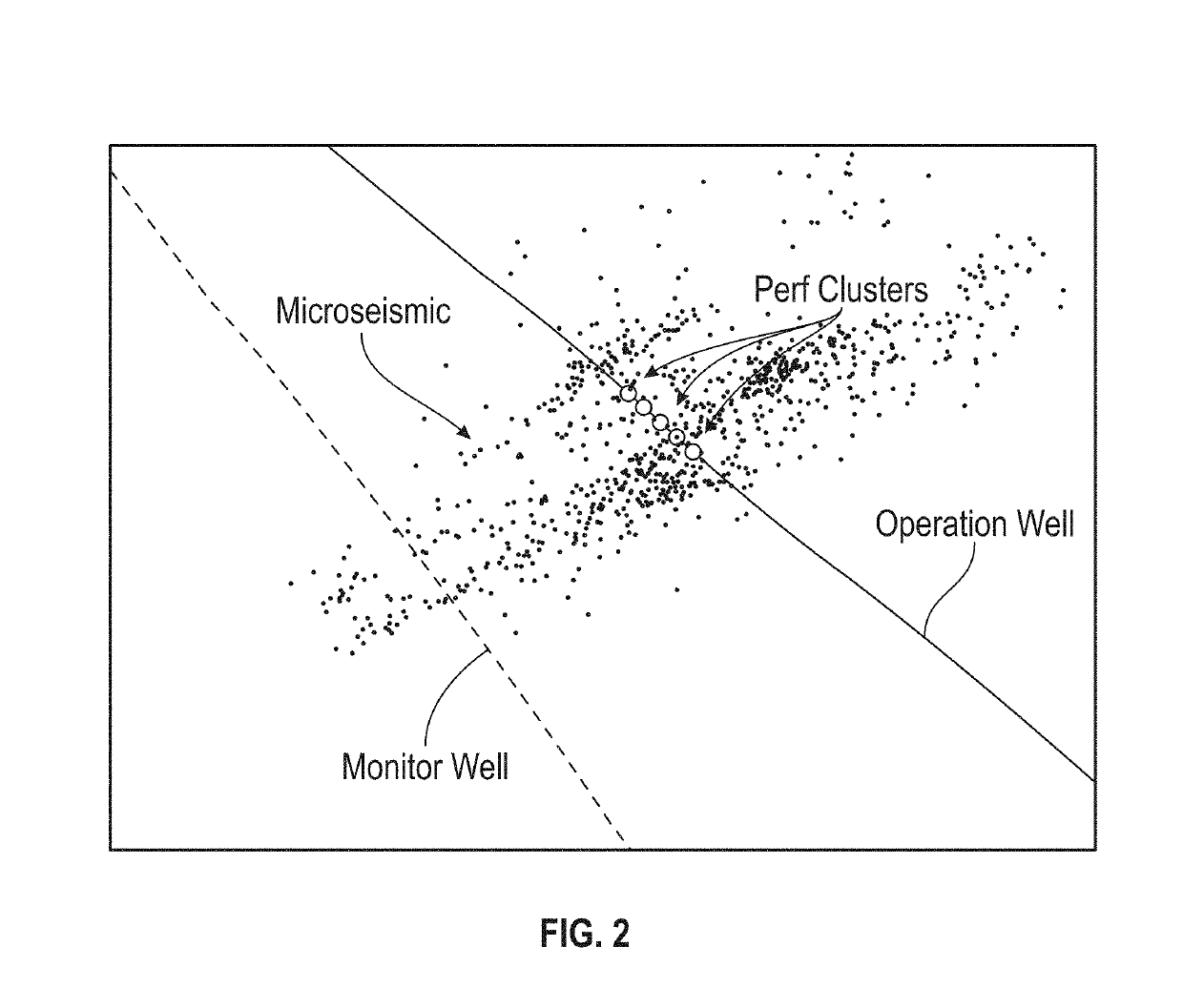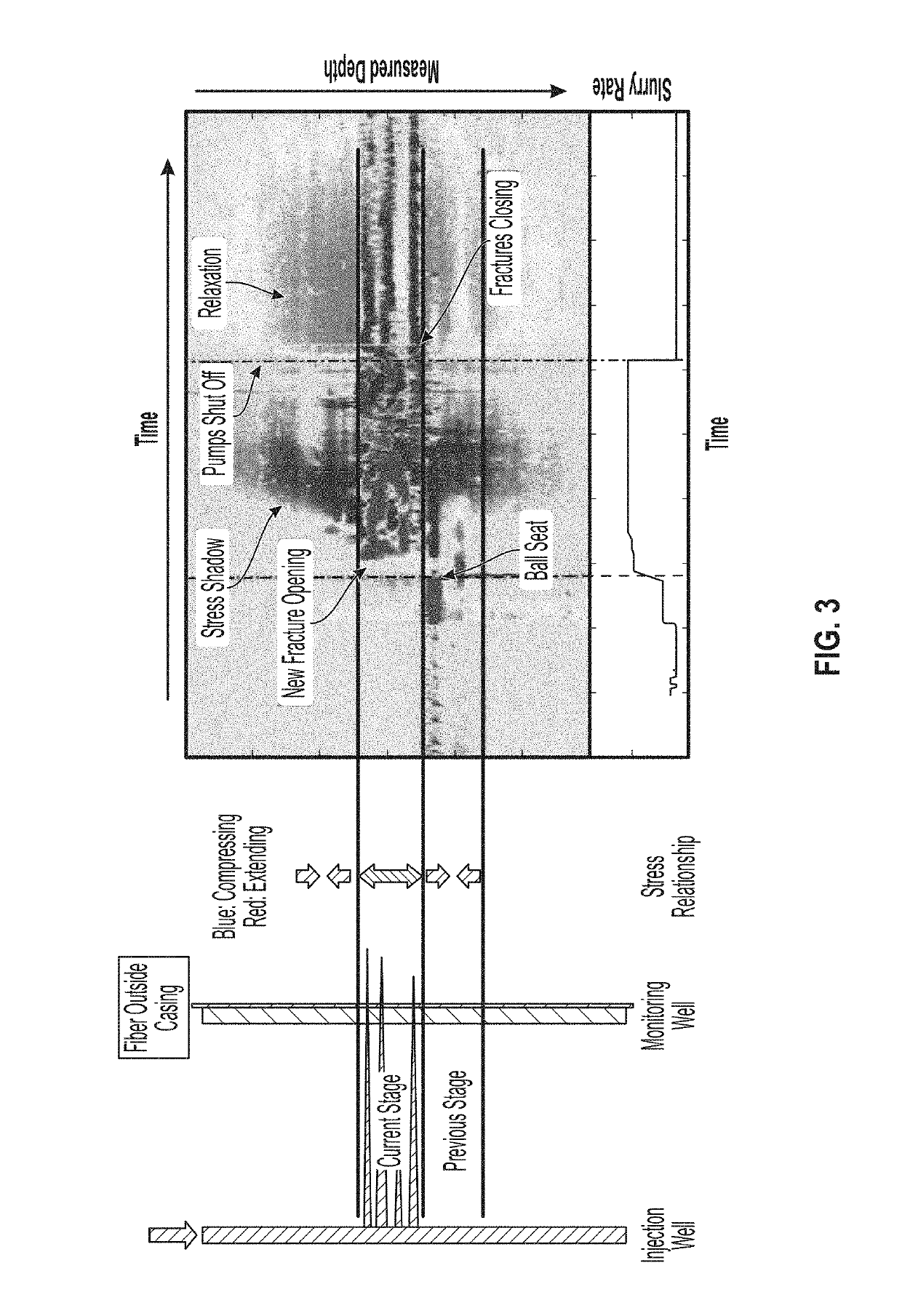Low frequency distributed acoustic sensing hydraulic fracture geometry
a distributed acoustic sensing and hydraulic fracture technology, applied in seismology for waterlogging, instruments, borehole/well accessories, etc., can solve the problems of uneconomical production, difference between cost effective production and uneconomical production, and all methods have their own strengths and limitations, so as to facilitate the processing of the complete dataset
- Summary
- Abstract
- Description
- Claims
- Application Information
AI Technical Summary
Benefits of technology
Problems solved by technology
Method used
Image
Examples
Embodiment Construction
[0055]The invention provides a novel data acquisition program or method for monitoring hydraulic fracturing and sampling stimulation rock volume (SRV).
[0056]Because DAS is a strain rate sensor and the fiber is mechanically coupled with the formation, strain from the process of hydraulic fracturing can be detected. The DAS data of two example stages shown in this study are recorded at an offset monitor well during stimulation of an adjacent well. The fiber-optic cables are installed outside the casing and cemented in place. The raw data are sampled at 10 kHz continuously at more than 6000 locations along the wellbore, with 1 m spatial sampling and 5 m gauge length. The recorded optical phase is differentiated in time, hence the DAS data are linearly correlated with the strain rate along the fiber.
[0057]The raw DAS data are down-sampled to 1 s after a low-pass anti-aliasing filter (0-0.5 Hz) is applied. The data are then median filtered to remove any spi...
PUM
 Login to View More
Login to View More Abstract
Description
Claims
Application Information
 Login to View More
Login to View More - R&D
- Intellectual Property
- Life Sciences
- Materials
- Tech Scout
- Unparalleled Data Quality
- Higher Quality Content
- 60% Fewer Hallucinations
Browse by: Latest US Patents, China's latest patents, Technical Efficacy Thesaurus, Application Domain, Technology Topic, Popular Technical Reports.
© 2025 PatSnap. All rights reserved.Legal|Privacy policy|Modern Slavery Act Transparency Statement|Sitemap|About US| Contact US: help@patsnap.com



